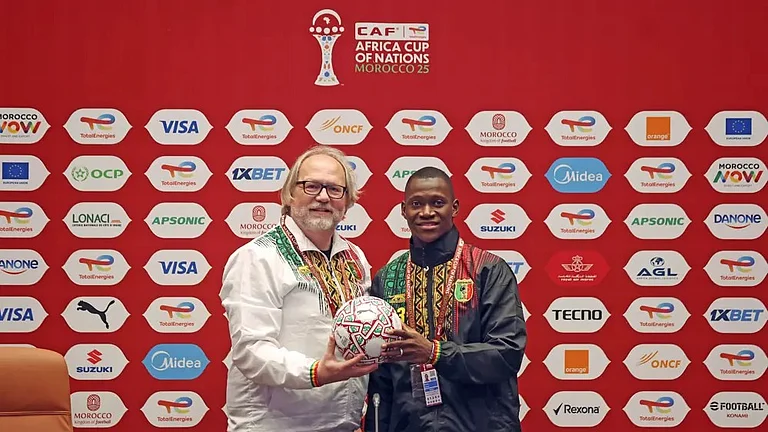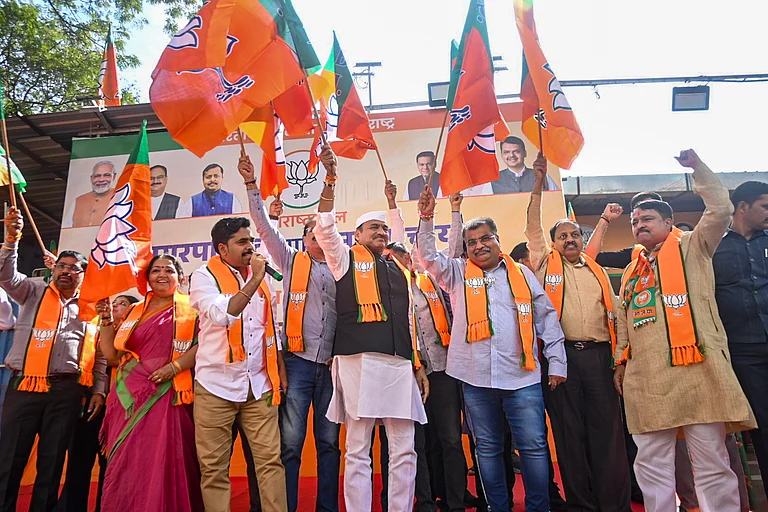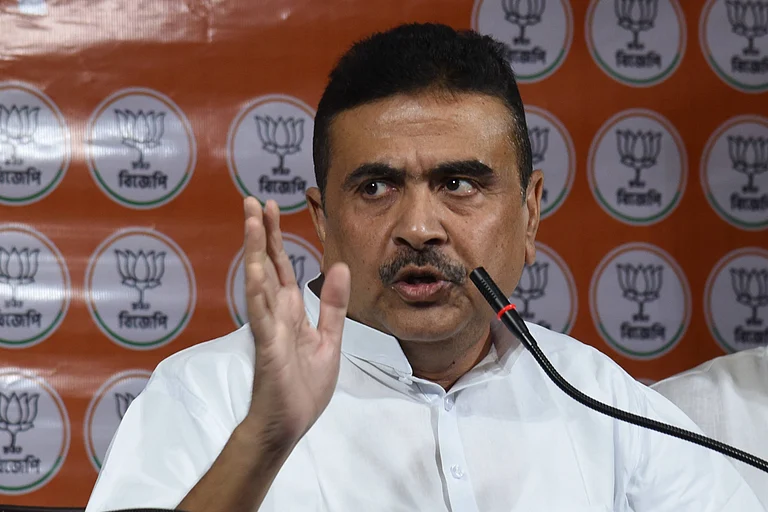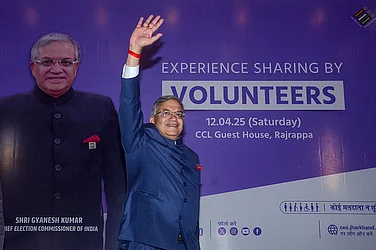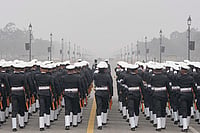

Shivraj Patil, Home
At first an embarrassment for the UPA, but has marginally recovered. But is still on a sticky wicket.

Natwar Singh, External affairs
After a few initial faux pas, has settled down in his job.


Pranab Mukherjee, Defence
Weakened his position by giving a clean chit to George Fernandes. But is still No. 2.

Laloo Prasad, Railways
Too much political tamasha has made him a liability for the UPA. But keeps the railway board on its toes.

Jaipal Reddy, I&B
Uncomfortable in his job and it shows.

Ghulam Nabi Azad, Parliamentary affairs and urban development:
His Kashmiri charm and easy style has earned him friends in the Opposition.

Dayanidhi Maran, Information Technology
One of the PM's favourites, but is accused of promoting family business in TamilNadu.

Ram Vilas Paswan, Chemical & Fertilisers
Preoccupied with Laloo and Bihar, not his ministry.

Mani Shankar Aiyar, Petroleum and Panchayati Raj
Has handled the petroleum ministry well, leaving him little time for panchayatiraj.



The BJP-led Opposition has, of course, focused on the "invisibility" of Manmohan Singh and the "power" that 10, Janpath wields. Former finance and foreign minister Yashwant Sinha sums up the Opposition's view: "The PM, traditionally, has been the leader of the nation. Even Charan Singh, H.D. Deve Gowda or I.K. Gujral were recognised as such. This is the first time the leader of the ruling party and the PM are two different persons. A prime minister must draw strength from the political process and political power directly to be effective." But Congress general secretary Digvijay Singh says: "It is a new experiment, but the division of labour is working. It gives the two persons more time to pay attention separately to what are two full-time jobs, running the government and managing the party."
Indeed, contrary to the conventional view that there is tension between Manmohan Singh and Sonia Gandhi, insiders stress that the two get on remarkably well. Points out party general secretary Ambika Soni: "The two trust each other and complement each other. It is an effortless relationship. The two are very correct in their dealings with each other. If it is a meeting called by Manmohan Singh in his capacity as prime minister, he takes the lead. If it is a UPA or Congress meeting, it is the other way round." And this view is endorsed by cabinet ministers, both from the Congress and the allied parties.
The economy is booming, the stockmarket flourishing, inflation is down; after the initial hiccups, foreign policy seems to be on track; as far as domestic affairs are concerned, even though the Naxal issue still eludes a solution, the Northeast and Jammu and Kashmir have quietened down.
So why does this PM appear weak? Why is this government not sending out a clear, coherent message? Is it because the government seems to be spending more time managing its allies? Or are its top ministers ineffective and its bureaucracy unresponsive? Or is it because the Opposition has denied it the honeymoon that a new government is entitled to?
Unlike the NDA's image-makers who were good at generating hype, the Congress style, epitomised by both Manmohan and Sonia, is understated. A PMO official says: "This government does not talk about India Shining, it talks about Bharat Nirman (the six-point business plan to galvanise agricultural growth)—a reminder of how much more there is to be done." But, as a young Congress MLA from UP points out, there are occasions when credit needs to be taken: "After the government's directive on total rural electrification by 2007, UP CM Mulayam Singh Yadav inaugurated the programme in 16 districts—he got the credit.The Congress was nowhere."
But the real problems in this government lie elsewhere: its leaders have not been able to push political expediency to the back when choosing ministers. Its policymakers have failed to change course in keeping with last year's electoral mandate. It has been unable to cleanse the bureaucracy of NDA-friendly elements and send out the message that there is a new government in Delhi. And finally, there is the PM's obsession—being a bureaucrat—with micromanaging the administration.
Take the top cabinet ministers: the PM defers in cabinet meetings on many issues to his number two, defence minister Pranab Mukherjee, but the latter's giving the UPA's Enemy No.1, George Fernandes, a clean chit in the Kargil arms purchases case generated an unwanted controversy. HRD minister Arjun Singh began with a bang, detoxifying his ministry: A year later, his miscalculations in the Bihar assembly elections, his neglect of other aspects of the ministry and bad chemistry with the PM have put a question mark on his future. Next year, when his Rajya Sabha seat expires, will he be given a fresh lease?

Home minister Shivraj Patil's initial handling of Manipur and his clumsiness in changing governors resulted in people questioning his fitness for the job. In the months since, however, his profile has improved, say colleagues. External affairs minister K. Natwar Singh may have put his initial faux pas (lack of clarity on sending Indian troops to Iraq) behind him but the PM's active role in the conduct of foreign policy has, to some extent, diminished his role. Finance minister P. Chidambaram's competence is rarely questioned, but he has been chafing at the bit at having to play third fiddle in the financial arena to both the PM and Planning Commission deputy chairperson Montek Singh Ahluwalia, not to mention his ongoing war with commerce minister Kamal Nath. Of Manmohan's allies, railway minister Laloo Prasad's tenure has been most problematic, even if many of the episodes have been generated by the BJP for whom he is like a red rag to a bull.
Indeed, a good part of the PM's time—and therefore negative media space—has been occupied with 'managing' allies within the government, and damage control to paper over his colleagues' blunders. But though a ministerial reshuffle is expected before President Abdul Kalam departs for a long tour on May 24, the PM may not find much room for manoeuvre. Eventually, only a few ministers of state may be dropped, some portfolios reshuffled and some blanks filled.
The government is also yet to deliver on its promise to improve the lot of the aam aadmi. Despite the definite change in rhetoric of this government and its sincere attempt to appear "more inclusive", focus attention on the most beleaguered (women, minorities, the jobless youth, Dalits and tribals), economist and member of Sonia Gandhi's National Advisory Council Jean Dreze feels the body has been ineffective.
Says Dreze: "For one thing, the aam aadmi is often out of focus at the NAC itself. For another, most NAC recommendations have made little impact. The Prathamik Shiksha Kosh is yet to be operationalised. Brutal evictions of tribal families from forest land continue. The NAC draft of the Rural Employment Guarantee Act was severely diluted before being tabled in Parliament...." The government's economic policies, he adds, are much the same as before: "The government is explicitly committed to the continuation of earlier economic policies. Moreover, the lobbies that drive these policies (the corporate sector, international financial institutions, and so on) remain the same, despite the change in political leadership."
Within government too, there is acknowledgement of the difficulties ahead. A PMO official admits that the current economic growth is generating largely high-value jobs, making a case for the National Rural Employment Guarantee Act."While India was modernising, the urban-rural disconnect widened," he says, adding that Bharat Nirman is expected "to unlock the potential of agriculture," and the yet-to-be legislatedNREGA, jobs in the rural sector. The Left parties and individuals like writer Arundhati Roy and Dreze launched the Rozgar Adhikar Yatra on May 13 to demand its speedy implementation.
The PM, on his part, appears to be conscious of the constraints.Flying back from Moscow, he admitted to journalists accompanying him that working within the framework of coalition politics was difficult."We therefore need to evolve a common minimum factor. There have been issues that I and my colleagues wanted to push through but couldn't. But politics is the art of the possible. I am conscious of the fact that the people voted for a variety of parties, including the Left, and we need to work together. We are working sincerely to give a sense of direction to the coalition."
So will the government last its full term, given that the average Congressman has yet to come to terms with coalition politics? If Sonia Gandhi's speech to the parliamentary party on May 11 was any indication, the coalition experiment is here to stay: "On the occasion of the first anniversary of the UPA government, I would like to thank our UPA allies and Left Front partners.... I am confident that the coalition has cemented itself and this will stand us in good stead in the future." But a minister reportedly close to both the PM and Sonia Gandhi said, "The nature of this coalition is that it can't be sustained for five years. We will have to look for a point when it suits us to go for elections but that can only happen if the government has achievements that the party can sell and the party itself is strengthened and rejuvenated."







